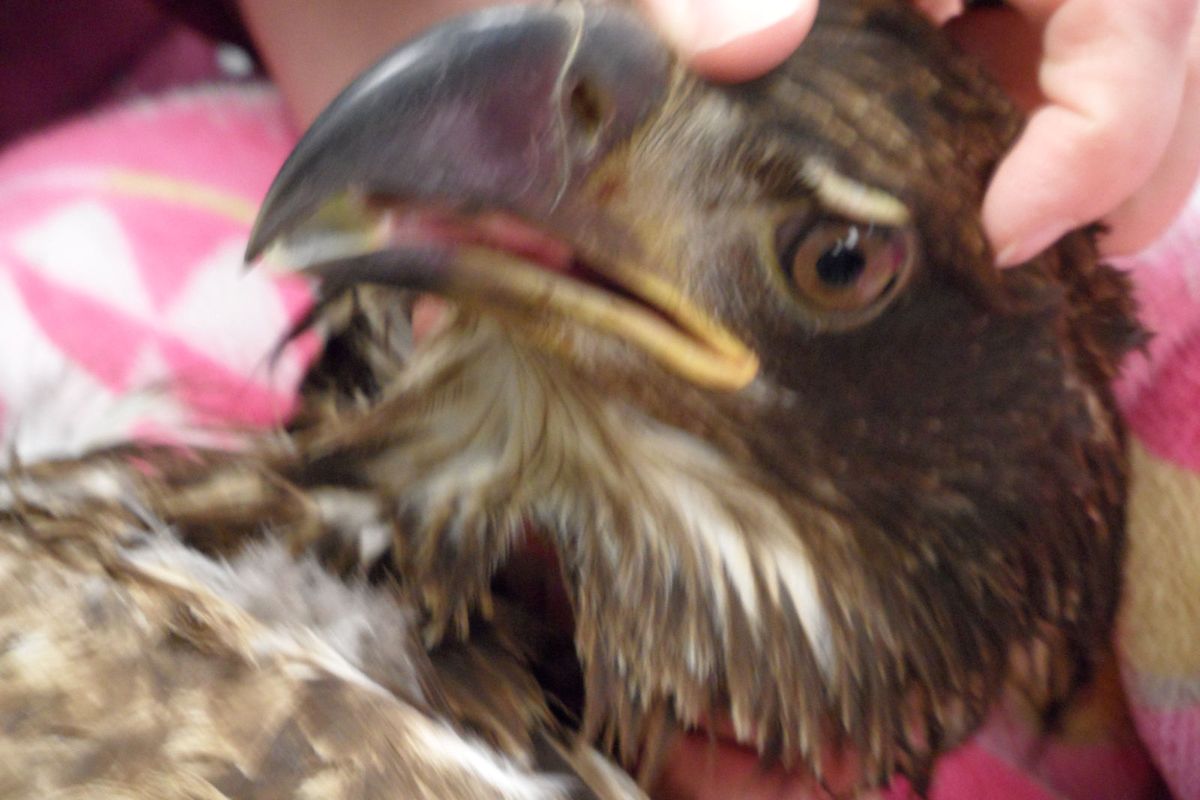Giving critters a second chance
Wildlife rehabilitators bid creatures comfort

This is where wildlife rehabilitators step in at the crossroads of Mother Nature and human nature.
“Our agency manages wildlife on a population level; the rehabilitators work on an individual level,” said Patricia Thompson, Washington Fish and Wildlife department wildlife rehabilitation coordinator.
“We understand their importance to the public. Nobody likes to see an animal hurt and sick.”
Generally, the state agency reacts to issues with individual animals only in cases involving public safety or threatened species, said Madonna Luers, department spokeswoman in Spokane.
“It’s simply a matter of our resources,” she said. “In the big picture, saving that one bald eagle has no impact on the eagle population. But on the personal level, when somebody finds a sick bird, we refer to them to a licensed rehabilitator.”
Some rehabilitators work on their own property, others work at facilities. All must work under the umbrella of a veterinarian.
“We see a little bit of everything, from songbirds to moose,” said Marilyn Omlor, one of seven rehabilitators in Spokane County. About 60 are licensed in the state.
A rehabilitator for 25 years, her job never seems to be done.
Collisions with vehicles, fences and power lines or ingestion of lead bullet fragments or fishing sinkers are common factors in ailments rehabilitators see in a wide range of species.
The past few months apparently have been especially hard on bald eagles. One of several seen by Omlor was a 15-pound youngster brought in by Tina and Judge Wynecoop. They found the immature bird weak, wet and unable to fly near a neighbor’s home along the Little Spokane River during a bitter cold snap.
They gathered the bird in a blanket and took it to Omlor in a dog crate.
“It seemed to have a burn mark on its foot,” said Omlor, who works out of Dr. Jerry Ponti’s Veterinary Hospital in Otis Orchards. “Once it warmed up, it could walk pretty nicely but had no gumption to fly up even to a counter.
“Its posture and the way it stands tells us a lot about the injury. If one wing is injured, the bird will lower it just a little bit, for example. Then we’ll do an X-ray.”
While Omlor already was treating a trumpeter swan and a long-eared owl for injuries, this eagle needed no more than a few days of warmth, nutrition and hydration.
Dr. Ponti has a barn large enough for the raptors to be turned loose to fly. Once the eagle proved it was ready for release, “We gathered it up using a big blanket and bravery,” she said. “Then it went out for release in appropriate habitat close to where it was found.”
People who bring sick wildlife to a rehabilitator must say goodbye at the door, Omlor said. Human relationships are minimized to give the animal its best chance for survival.
“We can’t save them all, but we do the best for the ones that come to our attention,” she said.
Just last week, another bald eagle was brought in. It was examined and treated, but it didn’t survive.
“Sometimes we end up doing little more than giving them a warm place to die,” she said. “We’re not in a Calvin and Hobbes cartoon. Even a portion of those that live have to be euthanized if they can never fly or hunt again.
“A red-tailed hawk that breaks a wing at the joint will never fly,” Omlor said. “We can’t just fix the wing and put it in a zoo. Zoos don’t want them.”
The amount of care a wild animal gets generally is governed by cost, Thompson said. “The rehabilitators can go only so far. The purpose is to release a completely functional and wild animal, if anything less than that, it can’t be released and has to be euthanized.
“We make exceptions for birds that will be kept for educational purposes, but that’s rare.”
Cost is not the only factor in wildlife rehabilitation.
“If an animal is hit by a car and its brain is swelling, you must have the room and availability of people to deal with a brain injury. But you can’t name it or keep it so long that it becomes a pet.
“If that animal doesn’t improve, you have to make the hard decision.
“On the other hand, when we can treat an animal and turn it loose, that’s awesome.”
Wildlife rehabilitators and the veterinarians who supervise them are a rare breed among animal care givers.
The rehabilitators must be licensed by the state. The Federal Migratory Bird Act requires them to have a federal permit for handling most birds and a special license is required for handling raptors.
Yet they cannot charge for their services to wildlife. Much of the cost is absorbed by the veterinarians, including the medicines, lodging, staff and X-rays.
“We support rehabilitators as best we can, philosophically and through a competitive grant program,” Thompson said.
“They’ll all tell you the application process is rigorous,” she said, hinting at the bureaucracy involved.
But there’s not much public money to go around. Grants total only about $50,000 a year for the entire state.
“The funding comes from sales of wildlife personal license plates,” Thompson said, noting that the program gets $2 from each plate. The state charges $40 for the special wildlife plates in addition to standard licensing fees.
“Some people graciously offer donations for our rehab work,” Omlor said, “and we don’t turn them down.”